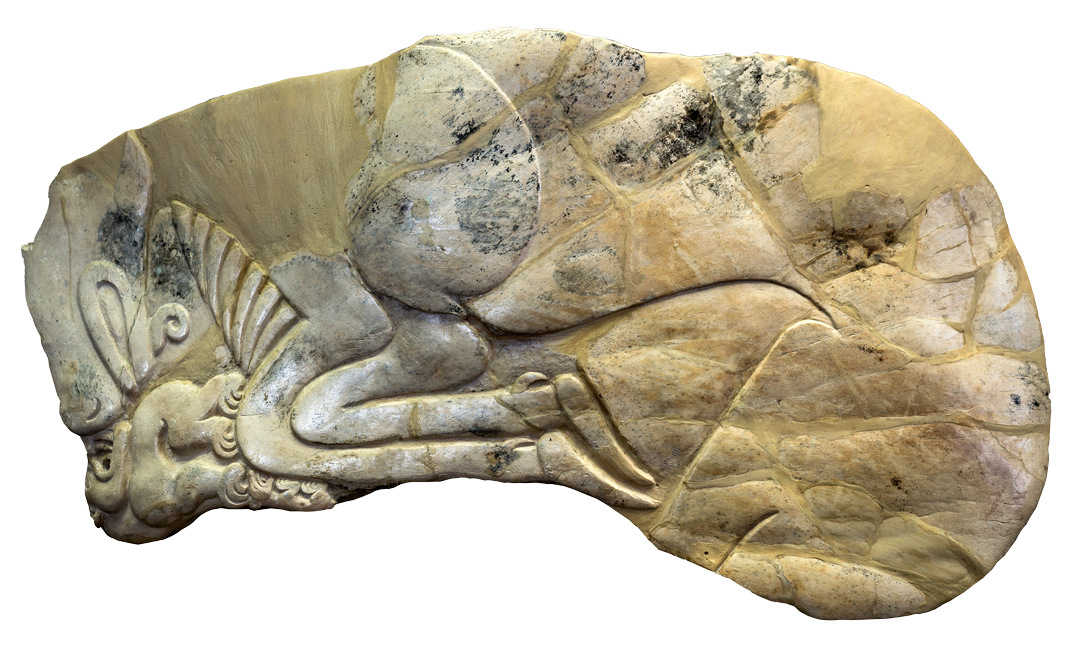Plaque with carved image of a fighting scene between two predators and a hoofed animal

On a massive plate of a moose’s horn in technique of high relief a figure of a predator bear is depicted, it turned its head back and bites a nose of a hoofed animal (probably it is a deer or a mountain goat – it is hard to define accurately as the figure remained incomplete) that is placed on a plaque perpendicularly to the bear and is laying with doubled up legs. Near an image of a small predator is placed. Open jaws of a predator are depicted in a typical manner for Savromats art. The bear is depicted standing stoutly on its massive paws. A small figure of a predator also has bear-like features: a short round body, big clawed paws, a short tail and small ears. These images of predators are similar to the items of art of Anan’ino culture tribes who lived in forestal area and to the art of population of Siberia, where the image of a bear has one of the major places. The composition is very static, disparity between animal figures catches the eye, their images seems to be put to the subrectangular area of a “spade” of a large horn of a moose – the master of a forest.
Exhibit’s purpose of use – unknown.
A unique horn plate from Patimar definitely belongs to the number of outstanding artifacts of the animal style – an original art phenomenon in culture of early nomads of Eurasian belt of steppes.
